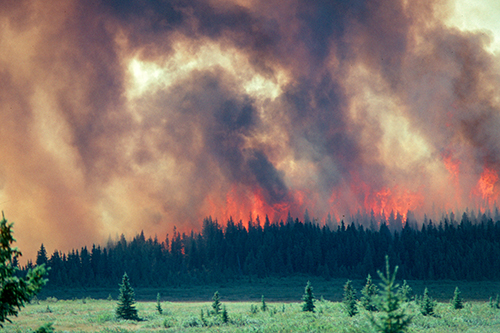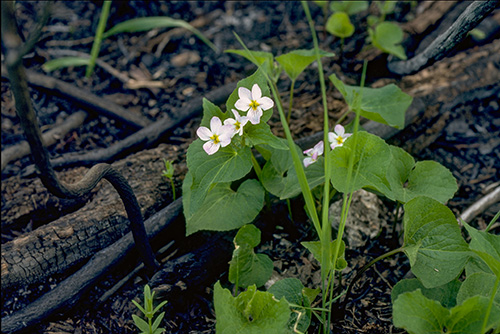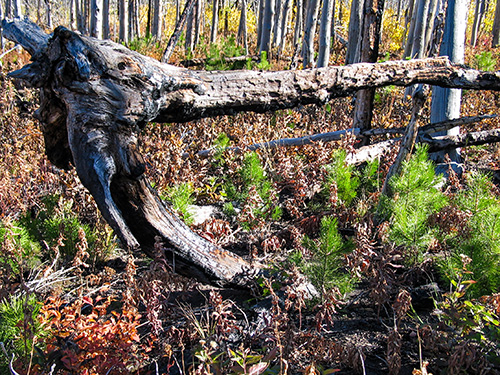Sofa Mountain Wildfire
Waterton Lakes National Park

A lightning strike started a wildfire on Sofa Mountain on the morning of September 2, 1998. Fanned by strong winds, a smouldering lightning strike became an intense and rapidly moving fire. Decades of fire suppression created high amounts of dead timber and ground debris to fuel the fire. At the fire’s peak, there were 180 people, 13 bulldozers, seven water trucks and eight helicopters combatting the blaze.
By September 18, the fire was classified as "under control". A total of 1521 hectares burned, nearly all within Waterton Lakes National Park and the Blood Timber Limit.
The area had not seen a fire of this magnitude since 1935. Research indicates that over the last 400 years, the Sofa Mountain area burns roughly every 95 to 100 years. The last major fire in this area was 130 years prior. Years of fire suppression created high fuel loads, contributing to the intensity of the fire.
Ecological Renewal

When fire roars through the forests and surrounding grasslands, important things happen. The most common reaction of visitors seeing the fire site was sadness and regret over the "devastation". Wildfires occur naturally and fulfil critical ecosystem functions, with the positive long-term ecological effects usually greater than the negative. Fire can be a regenerative process and is a component of a healthy ecosystem. Fire creates diversity in a forest and improves wildlife habitat in the long term by creating variety in forest ages and composition.
The mountain recovers

New plant growth sprouted soon after the fire. Over the following years grasses, shrubs, wildflowers and wildlife thrived. Burned trees, whether standing or fallen, provided important wildlife habitat. Fallen trees become home for insects, an excellent food source for bears. Grizzly and black bears also benefit from the abundant regrowth of huckleberries and Saskatoon berries.
Nutrients locked in dead plant material were transferred into the soil. The recharged soil encouraged germination of dormant seeds and resprouted native shrubs and perennials. The intense heat also opened lodgepole pinecones and released their seeds.
- Date modified :